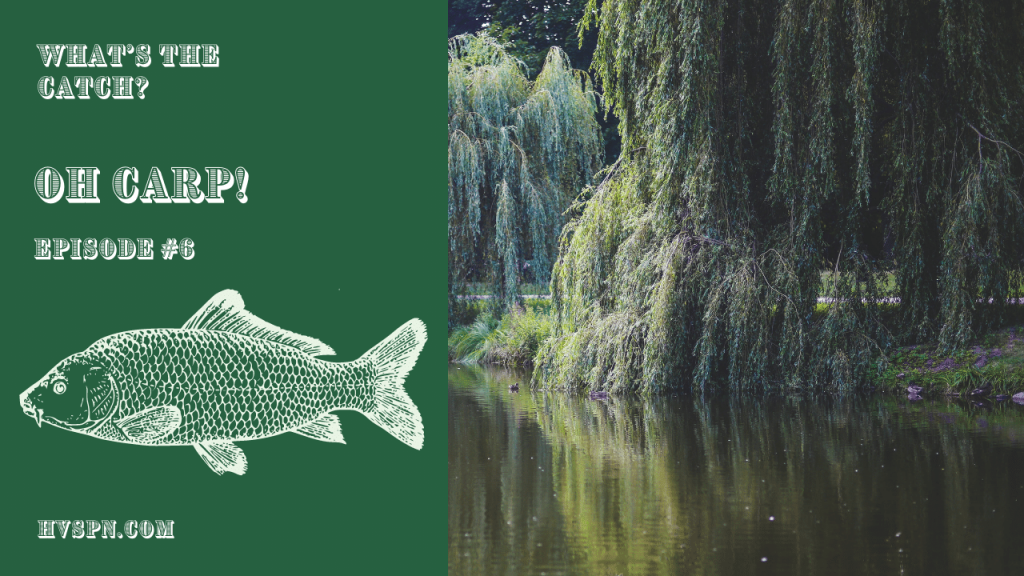Oh Carp!

Oh Carp!
Episode #6
You are listening to What’s The Catch? the podcast with your host Andrew Rowan.
In this episode of What’s The Catch? We’re gonna be talking about Carp :what they are, where to find them, how to catch them, and why you should want to catch them.
Segment 1: Species Background
The Eurasian Carp or European Carp, also known as the common Carp, is freshwater fish native to lakes and rivers of Europe and Asia. They are not native to North America, but they have been introduced to waters here since the mid-1800’s as a heavily farmed fish. They can now be found in local ponds, rivers, and lakes. Two of the big places to find them can be the Mississippi River and the Great lakes. They are bottom feeders, meaning that they swim along the bottom of a body of water and feed what’s on the bottom. They are large in size and have large scales, a large dorsal fin, and have two barbels (whiskers) on their upper lip. Their average size can range on average between 4-31 lbs. Adults can be between 16-31 inches long on average. The average lifespan for a common Carp can be up to 20 years.
Fun Facts
- The history of farming common Carp can date it’s beginning all the way to Roman times
- They are the 3rd most frequently introduced species worldwide
- There was once a report of a Carp living for 47 years in captivity
- The largest carp ever recorded was caught by Colin Smith at Etang La Saussaie Fishery, France in 2013. The carp clocked in at 100.5 lbs
- China is the largest producer of carp, accounting for 70% of the worlds production of the fish
Segment 2: Where can I find them?
Like I mentioned earlier, now that Carp have been farmed and spread to almost every state and to every country, you can find them almost everywhere.
Places near/in hopewell
- Delaware River
- Rosedale Lake
- Curlis Lake
- WallKill Lake
- Lake Hopatcong
Segment 3: How can I catch them?
Carp are strong fish and you will need to have a strong rod and line to make sure they don’t break you off or break your rod. They feed more in darkness so going early in the morning or at night will be the most effective time to go fishing for them.
Rods to use
- 6 ½ to 7 ½ feet long medium-heavy action spinning rod
Best line
- 10-15 lb monofilament or braid
Best live bait
- Sweet corn
- Bread
- Nighcrawlers (worms)
- Bugs
- dough baits
Best rigs
- You can use any rig you want. All I would recommend is that it has some kind of lead weight to keep it on the bottom, and to use an octopus hook.
Segment 4: Why should I want to catch them?
You should wanna catch these guys for a good couple of reasons. First, they are a good fish if you love a hard fight when reeling in. Like I said earlier, they are strong and will not be easy to catch. Second, they taste awesome. You can cook them any way you want, but I would recommend baking them in the oven and putting some kind of seasoning or glaze on it, kinda like how you prepare a salmon. Lastly, they are bad for ecosystems. They uproot and submerged vegetation when looking for insects, they make water clarity worse, and all this contributes to algae blooms. They also have no natural predators. So the more you catch them and get them out of our waters, the more your helping waters near you or around the world.

